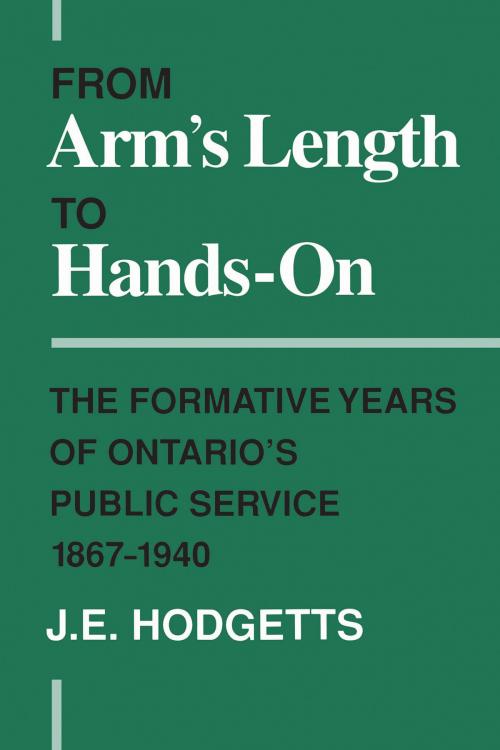From Arm's Length to Hands-On
The Formative Years of Ontario's Public Service, 1867-1940
Nonfiction, History, Americas, Canada| Author: | John Hodgetts | ISBN: | 9781487590086 |
| Publisher: | University of Toronto Press, Scholarly Publishing Division | Publication: | December 15, 1995 |
| Imprint: | Language: | English |
| Author: | John Hodgetts |
| ISBN: | 9781487590086 |
| Publisher: | University of Toronto Press, Scholarly Publishing Division |
| Publication: | December 15, 1995 |
| Imprint: | |
| Language: | English |
Confederation was a relief to legislators who had to ensure the uneasy union between Upper and Lower Canada; the dualism had demanded double-barrelled ministries and the rotation of the capital, after 1849, between Toronto and Quebec City every four years.
The year 1867 was therefore a watershed. The creation of the province of Ontario demanded that a civil service be put in place to support the new offices of the lieutenant-governor, Executive Council, and Legislative Assembly. However, the election of the Whitney government in 1905 is perceived by J.E. Hodgetts as an equally important dividing point in Ontario's bureaucratic history. Before 1905 the province met the fairly rudimentary needs of a largely agrarian community by relying on local authorities and the assistance of private clientele and charitable associations. Thus administration was at arm's length. It placed minimal demands on a miniscule staff and the simple structures of the emergent public service.
James Whitney's arrival in 1905 coincided with the growth of natural resource industries in the north and the need to create agencies to deal with them. Developing urbanization and industrialization were accompanied by technological advances in communication and transportation, and these too required regulation. This prompted the hands-on administrative mode, and the hands increased in number with the creation of new organizational satellites, the expansion and consolidation of departments, and the emergence of central agencies to reform, coordinate, and control. These strands of economic development and parallel administrative bodies form the substance of Hodgetts's history of the Ontario civil service from confederation until the beginning of the Second World War.
Hodgetts has analysed carefully the factors that led to the gradual enlargement of the government's functions and the progressive tightening of the exercise of its authority.
Confederation was a relief to legislators who had to ensure the uneasy union between Upper and Lower Canada; the dualism had demanded double-barrelled ministries and the rotation of the capital, after 1849, between Toronto and Quebec City every four years.
The year 1867 was therefore a watershed. The creation of the province of Ontario demanded that a civil service be put in place to support the new offices of the lieutenant-governor, Executive Council, and Legislative Assembly. However, the election of the Whitney government in 1905 is perceived by J.E. Hodgetts as an equally important dividing point in Ontario's bureaucratic history. Before 1905 the province met the fairly rudimentary needs of a largely agrarian community by relying on local authorities and the assistance of private clientele and charitable associations. Thus administration was at arm's length. It placed minimal demands on a miniscule staff and the simple structures of the emergent public service.
James Whitney's arrival in 1905 coincided with the growth of natural resource industries in the north and the need to create agencies to deal with them. Developing urbanization and industrialization were accompanied by technological advances in communication and transportation, and these too required regulation. This prompted the hands-on administrative mode, and the hands increased in number with the creation of new organizational satellites, the expansion and consolidation of departments, and the emergence of central agencies to reform, coordinate, and control. These strands of economic development and parallel administrative bodies form the substance of Hodgetts's history of the Ontario civil service from confederation until the beginning of the Second World War.
Hodgetts has analysed carefully the factors that led to the gradual enlargement of the government's functions and the progressive tightening of the exercise of its authority.















